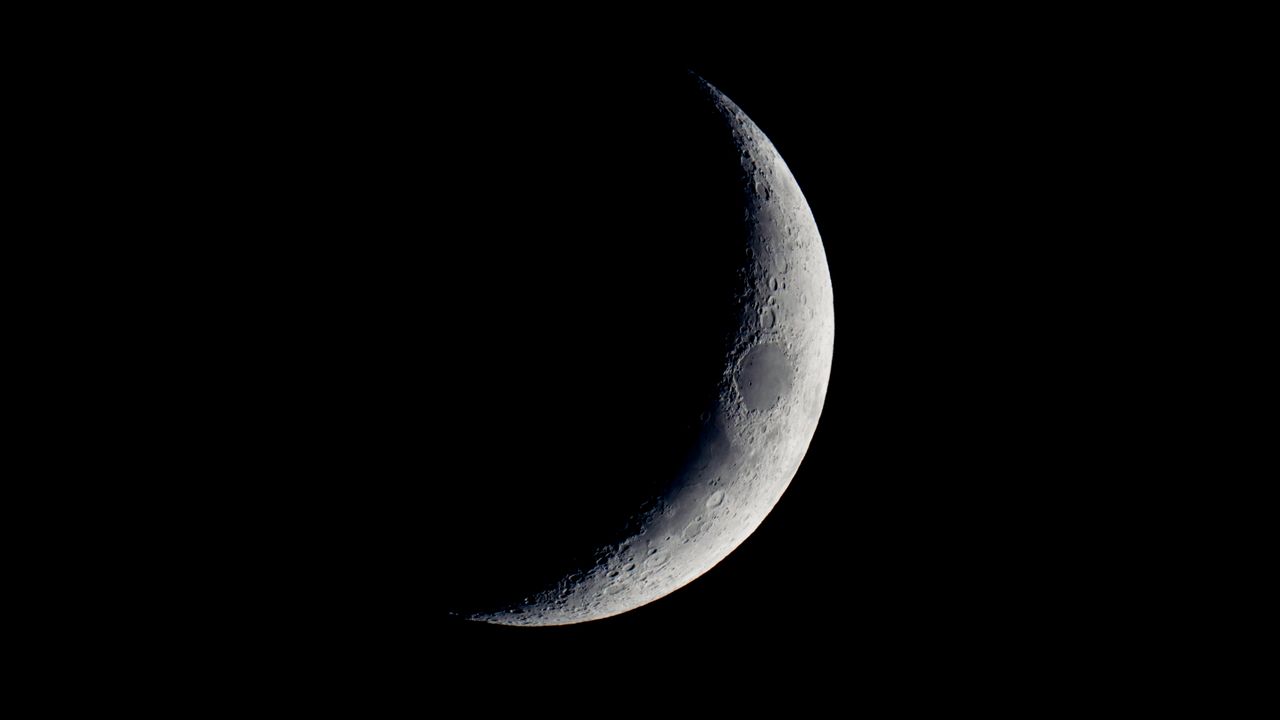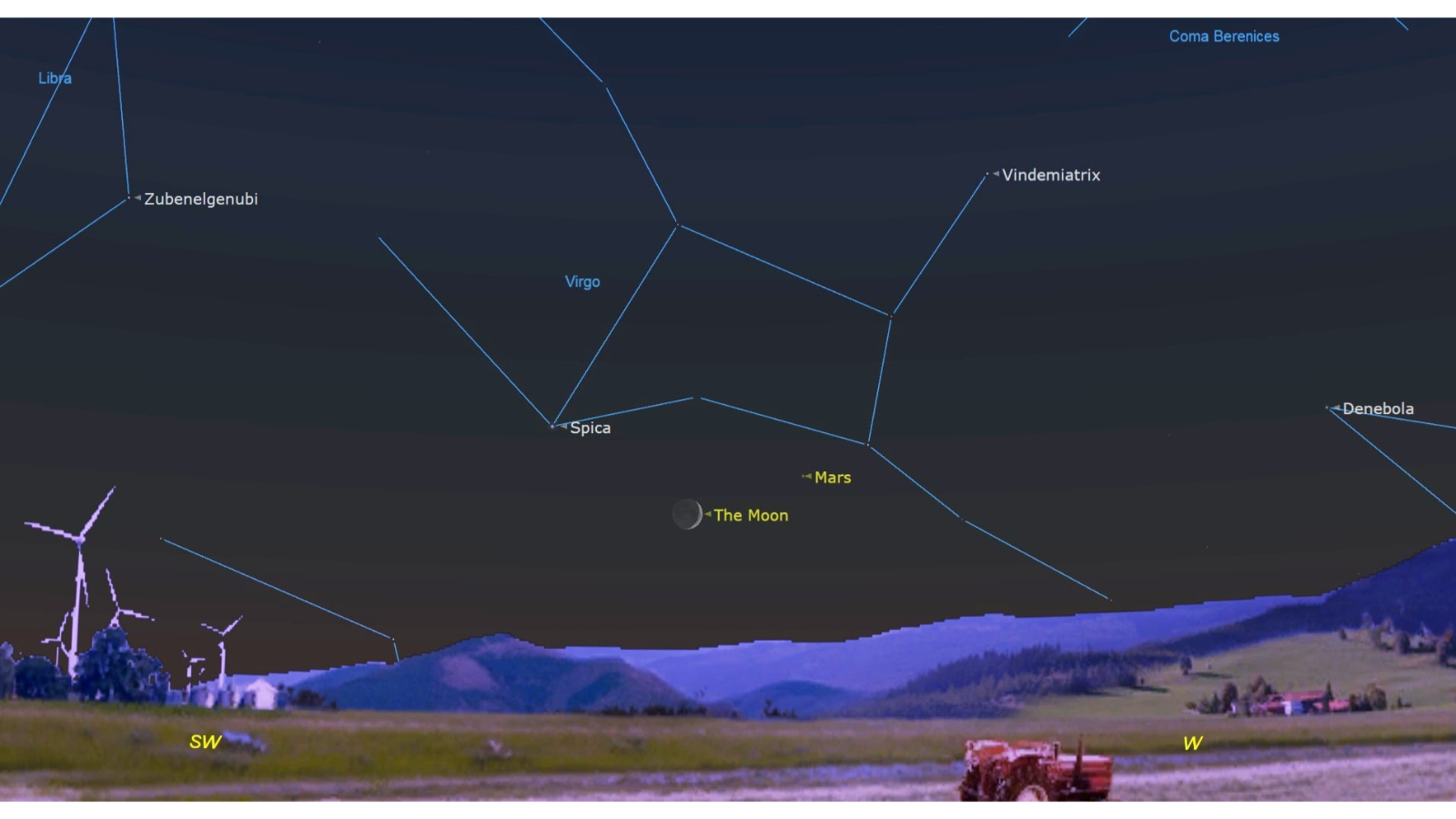
Look to the western horizon to catch a fleeting glimpse of the thin crescent moon alongside the red glow of Mars on Aug. 26, set among the stars of the constellation Virgo.
Mars will sit less than 10 degrees above the horizon at sunset, with the 11 %-lit waxing crescent moon hanging less than 6 degrees to its lower left. Remember, the width of your clenched fist held at arm's length accounts for 10 degrees in the night sky, while the span of your index, middle and ring fingers is approximately 5 degrees.
Be sure to stake out a spot with a clear view of the western horizon to give yourself the best chance of spotting the moon and Mars together before they slip below the skyline a little over an hour after sunset on Aug. 26.
Through a pair of 10x50 binoculars, you'll also be able to spot the ancient lava plain of Mare Crisium (Latin for the Sea of Crises), which is visible as a dark oval slightly above the lunar equator, with the eastern edge of Mare Fecunditatis (the Sea of Fertility) below.
To complete the scene, Spica — the brightest star in the constellation Virgo — will glisten to the upper left of the moon, while the dimmer star Porrima will shine roughly 3 degrees to the upper right of Mars.


We reckon the Celestron NexStar 8SE is the best motorized telescope out there as it's great for astrophotography, deep-space observing and it offers stunning detailed imagery. It is a little pricey but for what you get, it's good value. For a more detailed look, you can check out our Celestron NexStar 8SE review.
By the following night, the crescent moon will have swept away from Mars, past Spica on a path that will see it rendezvous with the red supergiant star Antares in the constellation Scorpius on the night before the first quarter moon phase on Aug. 31.
Stargazers hoping to get a closer view of the lunar surface should read our roundup of the best telescope deals available in 2025, while photographers should check out our guide on how to capture the moon's surface.using a DSLR camera.
Editor's Note: If you would capture an image of the crescent moon with Mars and want to share it with Space.com's readers, then please send your photo(s), comments, name and location to spacephotos@space.com.







